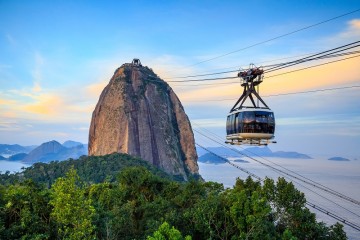Pantanal & Bonito
Tour Overview
Experience the beauty of Brazil on our handcrafted Pantanal & Bonito tour.
The Pantanal is the greatest tropical wetland region on earth, and the world's largest flooded grasslands. Although frequently overshadowed by the Amazon Rainforest, the Pantanal is rich in flora and fauna, having the largest concentration of crocodiles in the world, with approximately 10 million caimans. And as jaguars hunt caiman, the Pantanal has one of the highest density of jaguars anywhere the world. The Pantanal is also home to the biggest parrot on the planet, the hyacinth macaw!
Explore these amazing wetlands while staying at Pousada Aguape farm, in an area that has belonged to the same family for over 150 years. While they still produce cattle they have expanded their efforts to support some regional environmental projects and promote ecological tourism. Enjoy horse riding, piranha fishing, night safaris to spot animals such as anteaters, foxes, capybaras and caimans, walks, 4WD safaris and boat safaris.
After spending three nights visiting the Pantanal, travel to Bonito where you will have the opportunity to snorkel in crystal clear waters at Sucuri River and Rio de Prata on the Olho D’agua River. Explore one of the biggest sinkholes in the world, Buraco das Aras (Macaw Pit), which is now the home of tens of thousands of birds, including macaws and over 150 other species.
We offer a superior option at the Caiman Eco Lodge if you want to upgrade in the Pantanal!
Viva's Best Bits...
Experience the Pantanal, the largest wetlands in the world, on the lookout for the elusive jaguar. The best time for this is the dry season, July to October, when the animals cluster around the shrinking oxbow lakes and rivers.
Fish for piranha, horse ride, snorkel, go on boat and 4WD safaris always on the look out for wildlife including capybaras, caimans, and anteaters. At the Buraco das Aras (Macaw Pit) spot the stunning hyacinth macaw.
Snorkel in some of the world's purest waterways in Bonito, relax floating down the Sucuri river and Rio da Prata looking out for over 50 species of tropical fish, including giant dourados and large schools of pacus.


